Xing Li
age ~34
from Burlington, MA
- Also known as:
-
- Li Xing
Xing Li Phones & Addresses
- Burlington, MA
- Sammamish, WA
- Issaquah, WA
- Chicago, IL
- Madison, WI
- Shoreview, MN
- Indianapolis, IN
- Evanston, IL
- Fitchburg, WI
Isbn (Books And Publications)

Name / Title
Company / Classification
Phones & Addresses
Director
J International Art Company
President
USA ROSEMARY BIOTECHNOLOGY RESEARCH INC
Business Services
Business Services
6050 W Eastwood Ave #201, Chicago, IL 60630
4849 N Milwaukee Ave, Chicago, IL 60630
4849 N Milwaukee Ave, Chicago, IL 60630
Us Patents
-
Enhanced Signal Processing For Cochlear Implants
view source -
US Patent:8019431, Sep 13, 2011
-
Filed:Jun 2, 2009
-
Appl. No.:12/476979
-
Inventors:Kaibao Nie - Bothell WA, US
Les Atlas - Seattle WA, US
Jay Rubinstein - Seattle WA, US
Xing Li - Bellevue WA, US
Charles Pascal Clark - Seattle WA, US -
Assignee:University of Washington - Seattle WA
-
International Classification:A61N 1/00
-
US Classification:607 57
-
Abstract:The restoration of melody perception is a key remaining challenge in cochlear implants. A novel sound coding strategy is proposed that converts an input audio signal into time-varying electrically stimulating pulse trains. A sound is first split into several frequency sub-bands with a fixed filter bank or a dynamic filter bank tracking harmonics in sounds. Each sub-band signal is coherently downward shifted to a low-frequency base band. These resulting coherent envelope signals have Hermitian symmetric frequency spectrums and are thus real-valued. A peak detector or high-rate sampler of half-wave rectified coherent envelope signals in each sub-band further converts the coherent envelopes into rate-varying, interleaved pulse trains. Acoustic simulations of cochlear implants using this new technique with normal hearing listeners, showed significant improvement in melody recognition over the most common conventional stimulation approach used in cochlear implants.
-
Generating And Deploying Security Policies For Microsegmentation
view source -
US Patent:20230104751, Apr 6, 2023
-
Filed:Oct 19, 2022
-
Appl. No.:17/969314
-
Inventors:- San Jose CA, US
Peter Nahas - Watertown MA, US
Xing Li - Burlington MA, US
Suji Suresh - Westford MA, US
Daniel R. Perkins - Boston MA, US
Peter Smith - Acton MA, US -
International Classification:H04L 45/02
H04L 9/40
H04L 47/70 -
Abstract:Systems and methods include receiving network communication information about hosts in a network and applications executed on the hosts; automatically generating one or more microsegments in the network based on analysis of the obtained network communication information, wherein each microsegment of the one or more microsegments is a grouping of resources including the hosts and the applications executed on the hosts that have rules for network communication; and providing the one or more microsegments to one or more hosts of the hosts, for use by the one or more hosts to allow or block communications locally based on the one or more microsegments. Each of the one or more microsegments can be a grouping of workloads inside a data center.
-
Adeno Associated Virus Vectors For The Treatment Of Hunter Disease
view source -
US Patent:20210332383, Oct 28, 2021
-
Filed:Dec 9, 2020
-
Appl. No.:17/116098
-
Inventors:- Lexington MA, US
Xing Li - LEXINGTON MA, US -
International Classification:C12N 15/86
C12N 9/16
A61K 9/00 -
Abstract:The present disclosure provides, among other things, a recombinant adeno-associated virus (rAAV) vector comprising an AAV8 or AAV9 capsid and a codon-optimized sequence encoding a human iduronate-2-sulfatase (I2S) enzyme. The disclosure also provides a method of treating a subject having Hunter syndrome (MPS II), comprising administering to the subject in need thereof a recombinant adeno-associated virus (rAAV) vector comprising an AAV8 or AAV9 capsid, and a promoter operably linked to a nucleic acid sequence that encodes iduronate-2-sulfatase (I2S), and wherein administering results in an increase in I2S enzymatic activity in the subject.
-
Auto Re-Segmentation To Assign New Applications In A Microsegmented Network
view source -
US Patent:20210314250, Oct 7, 2021
-
Filed:Jun 17, 2021
-
Appl. No.:17/350180
-
Inventors:- San Jose CA, US
Peter Nahas - Watertown MA, US
Xing Li - Burlington MA, US
Suji Suresh - Westford MA, US
Daniel R. Perkins - Boston MA, US
Peter Smith - Acton MA, US -
International Classification:H04L 12/751
H04L 12/911
H04L 29/06 -
Abstract:Systems and methods include, subsequent to performing auto segmentation on a network that includes a set of policies of allowable and block communications, observing communication between a plurality of hosts on the network; determining unassigned communication paths based on the observing that are either blocked because of a lack of a policy of the set of policies or because there is no policy of the set of policies for coverage thereof; and assigning the unassigned communication paths to corresponding policies of the set of policies. The assigning can be based on heuristics. The assigning can be performed without reperforming auto segmentation.
-
Aav Triple-Plasmid System
view source -
US Patent:20210275614, Sep 9, 2021
-
Filed:Oct 24, 2019
-
Appl. No.:17/288141
-
Inventors:- Osaka, JP
Xing LI - Jamaica Plain MA, US -
Assignee:Takeda Pharmaceutical Company Limited - Osaka
-
International Classification:A61K 35/761
A61K 38/17 -
Abstract:A triple-plasmid system for producing recombinant adeno-associated viruses is disclosed.
-
Semi-Automatic Communication Network Microsegmentation
view source -
US Patent:20200396255, Dec 17, 2020
-
Filed:Jun 11, 2020
-
Appl. No.:16/898997
-
Inventors:- San Jose CA, US
Aparna Ayikkara - Brookline NH, US
Omar Baba - Winchester MA, US
Daniel Einspanjer - Salem NH, US
Anthony Gelsomini - Westwood MA, US
Thomas C. Hickman - Hollis NH, US
Peter Kahn - Southborough MA, US
Andriy Kochura - North Andover MA, US
Nikitha Koppu - Shrewsbury MA, US
Scott Laplante - Bedford NH, US
Xing Li - Burlington MA, US
Raymond Brian Liu - Lexington MA, US
Sean Lutner - Norfolk MA, US
Michael J. Melson - Arlington MA, US
Peter Nahas - Watertown MA, US
John O'Neil - Watertown MA, US
Herman Parfenov - Andover MA, US
Joseph Riopel - Worcester MA, US
Suji Suresh - Westford MA, US
Harry Sverdlove - North Reading MA, US -
International Classification:H04L 29/06
H04W 12/08
H04L 29/08
H04L 12/24 -
Abstract:A computer system automatically generates a proposal for performing microsegmentation on a network. The system provides output representing the proposed microsegmentation to a user. The user provides input either approving or disapproving of the proposed microsegmentation. If the user approves of the proposed microsegmentation, then the system implements the microsegmentation. Otherwise, the system does not implement the proposed microsegmentation. This process may be repeated for a plurality of proposed microsegmentations within the same network, and may be repeated over time to modify one or more existing microsegmentations. The system advantageously performs the vast majority of the work required to microsegment the network automatically, leaving only the task of review and approval to the user. This both saves a significant amount of time and increases the quality of the microsegmentation in comparison to microsegmentation solely performed manually by one or more humans.
-
Oilfield Management Method And System
view source -
US Patent:20160326846, Nov 10, 2016
-
Filed:Jan 6, 2015
-
Appl. No.:15/109681
-
Inventors:- BJ The Hague, NL
Benoit Couet - Belmont MA, US
William J. Bailey - Cambridge MA, US
Xing Li - Grapevine TX, US -
International Classification:E21B 41/00
G06Q 50/02
G05B 13/04
E21B 43/26
E21B 49/00 -
Abstract:Oilfield management includes obtaining a binary variable array describing configurable elements of an oilfield design, partitioning the binary variable array into subgroups, and applying a transformation function to each subgroup to obtain an integer variable for each subgroup. An optimization problem is solved on the binary variable array by treating the integer variable as a continuous variable to obtain a solution, and the transformation function of each subgroup is applied to the solution to obtain a design pattern. Based on the design pattern, the oilfield design is generated.
Resumes

Software Engineer
view sourceLocation:
Madison, WI
Industry:
Computer & Network Security
Work:
Edgewise Networks
Software Engineer
Harvard Medical School May 2017 - Aug 2017
Data Visualization Intern
University of Illinois at Chicago Jan 2016 - May 2017
Graduate Teaching Assistant
Epic Aug 2013 - Jul 2015
Quality Assurance and Smartdata Design
Szleifer Lab May 2011 - Jun 2013
Clp Summer Research Fellow
Software Engineer
Harvard Medical School May 2017 - Aug 2017
Data Visualization Intern
University of Illinois at Chicago Jan 2016 - May 2017
Graduate Teaching Assistant
Epic Aug 2013 - Jul 2015
Quality Assurance and Smartdata Design
Szleifer Lab May 2011 - Jun 2013
Clp Summer Research Fellow
Education:
University of Illinois at Chicago 2015 - 2017
Masters, Computer Science Northwestern University 2009 - 2013
Bachelor of Applied Science, Bachelors, Applied Science, Medical Engineering Mounds View High School 2009
Masters, Computer Science Northwestern University 2009 - 2013
Bachelor of Applied Science, Bachelors, Applied Science, Medical Engineering Mounds View High School 2009
Skills:
Microsoft Office
Matlab
Gel Electrophoresis
Python
C++
Fortran
Statistics
C
Pcr
Microsoft Excel
Word
Mysql
Javascript
Html5
Java
Excel
D3.Js
Cell Culture
Primer Design
Angularjs
Rxjs
Typescript
Matlab
Gel Electrophoresis
Python
C++
Fortran
Statistics
C
Pcr
Microsoft Excel
Word
Mysql
Javascript
Html5
Java
Excel
D3.Js
Cell Culture
Primer Design
Angularjs
Rxjs
Typescript
Languages:
English
Chinese
Chinese

Xing Li
view source
Xing Li
view source
Xing Li
view source
Xing Li
view source
Xing Li
view source
Xing Eap Li
view source
Xing Li
view sourceClassmates

Xing Li
view sourceSchools:
Alberta College Edmonton Azores 2001-2005
Community:
Marion Henry, Kurt Schacker

Canisius College - Busine...
view sourceGraduates:
Michele Laski (2001-2002),
Sean McGillicuddy (1984-1988),
Gregory Diaz (1996-1999),
Earl Martin (1972-1976),
Jian Xing LI (1994-1996)
Sean McGillicuddy (1984-1988),
Gregory Diaz (1996-1999),
Earl Martin (1972-1976),
Jian Xing LI (1994-1996)

Alberta College, Edmonton...
view sourceGraduates:
Warren Tsang (1968-1972),
Houghton Wan (1992-1993),
Emelda Apique (1997-2001),
Xing Li (2001-2005)
Houghton Wan (1992-1993),
Emelda Apique (1997-2001),
Xing Li (2001-2005)
Plaxo

li xing
view sourceArchitect at De Stefano + Partners
Myspace
Youtube
Flickr

Xing Qi Li
view source
Xing Xing Li
view source
Xing Chen Li
view source
Zhang Xing Li
view source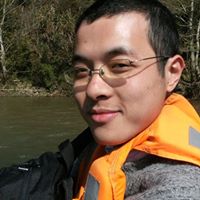
Xing Li
view source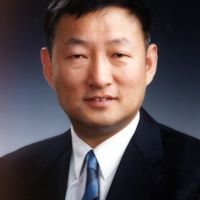
Xing Li
view source
Xing Li
view source
Xing Li
view sourceGoogleplus
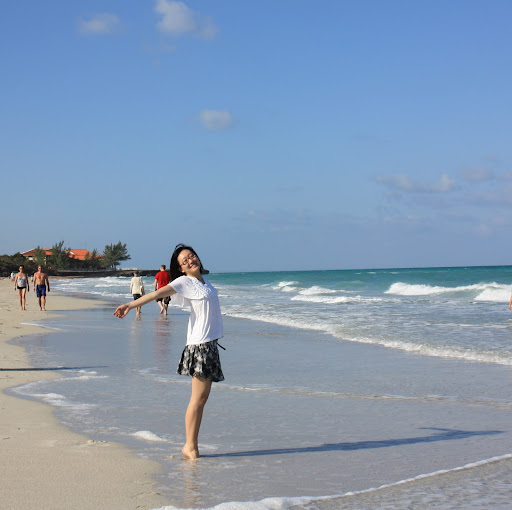
Xing Li
Work:
Merck & Co. - Research Intern (5)
Education:
Cornell University - Biological Engineering
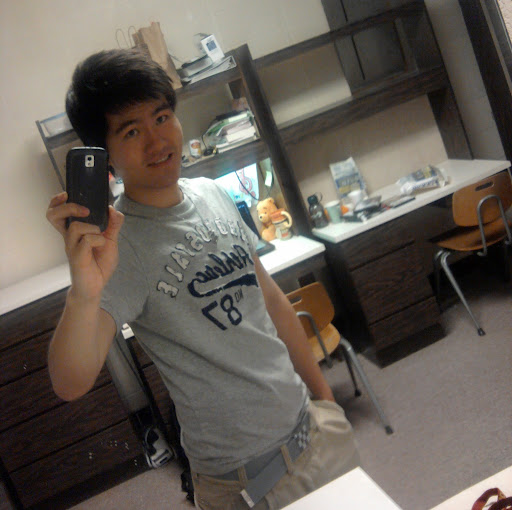
Xing Li
Lived:
Seattle, WA, US
Education:
Seattle Central Community College
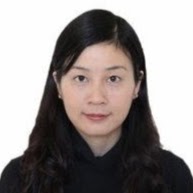
Xing Li

Xing Li

Xing Li

Xing Li

Xing Li

Xing Li
Get Report for Xing Li from Burlington, MA, age ~34















